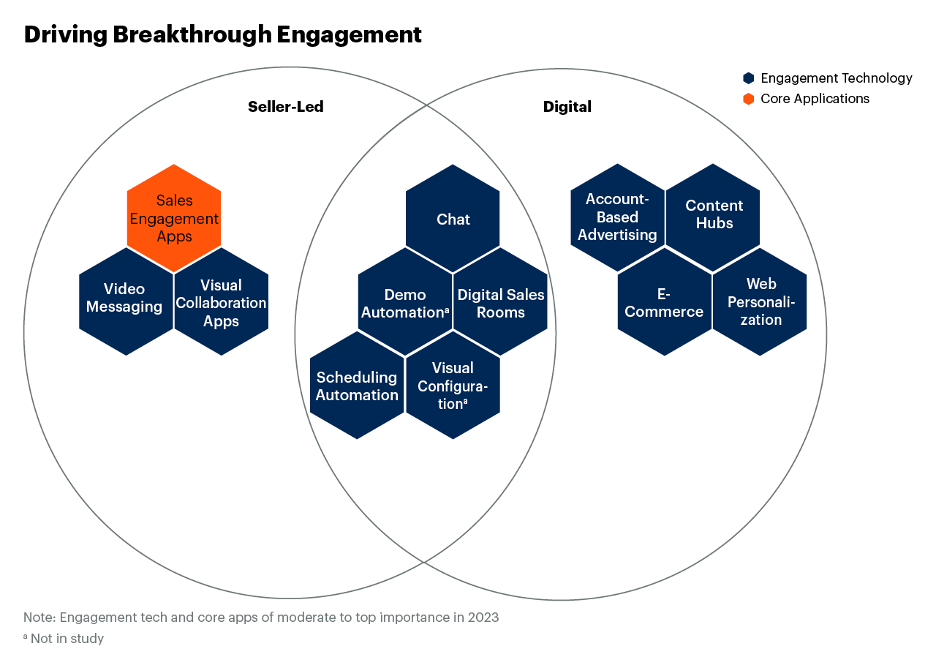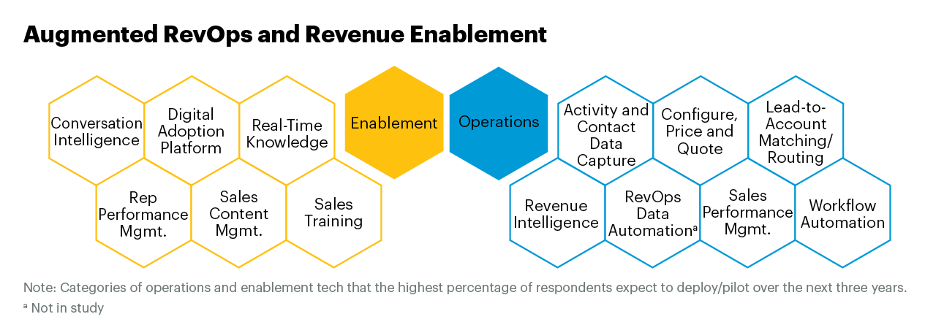 Faced with inflation, persistent enterprise talent challenges and ongoing supply chain issues, Chief Sales Officers (CSOs) are under pressure to optimize selling, general and administrative costs while still driving revenue growth.
Faced with inflation, persistent enterprise talent challenges and ongoing supply chain issues, Chief Sales Officers (CSOs) are under pressure to optimize selling, general and administrative costs while still driving revenue growth.
While a knee-jerk reaction is to jump straight into cost-optimization mode, Gartner research shows that 65% of CFOs plan to increase digital technology spend over the next 12 months. This data suggest that sales leaders are encouraged by their CFO peers to adopt a progressive strategy to invest in the future growth of the business.
CSOs realize that passing input costs on to customers in the form of higher prices becomes difficult to maintain, eventually leading to margin erosion. In response to this challenge, they are adopting productivity engineering techniques as they build their revenue technology (RevTech) strategies. Productivity engineering investments target core internal operating efficiency gains and net performance of each sales channel and take chances introducing breakthrough innovation across the end-to-end revenue process.
To help sales leaders rationalize their accumulated RevTech investments and technological debt, Gartner surveyed sales leaders about current ROI, future importance and future adoption across 46 revenue technologies in the ecosystem. To identify opportunities for engineering productivity and cost-optimization, organizations should evaluate their RevTech stack against these components: Engagement, core applications, operations (revenue and sales), enablement, infrastructure and revenue data solutions. Gartner also identified three trends for CSOs to capitalize on to make the most use of their RevTech stack.
Trend No. 1: Sales Leaders Are Driving Breakthrough Digital Buyer Engagement
With 83% of B2B buyers preferring to pay or buy through digital commerce, sales leaders are increasing their investments to focus on supporting digital buying (see Figure 1).This is in line with Gartner’s prediction that by 2025, 80% of B2B sales interactions between suppliers and buyers will occur in digital channels.
Figure 1 highlights technologies that sales leaders believe will be important in 2023. The survey results indicate a focus on optimizing the performance of the company website as a key sales channel. This optimized performance relies on technologies that connect digital marketing and hybrid sales/marketing automation.
These technologies improve pipeline and channel productivity by addressing the top customer challenges using B2B websites. Buyers want better information, more control over the evaluation process and a more organized experience getting support from sellers throughout the process.
Figure 1.

Source: Gartner
Trend No. 2: Sales Leaders Are Starting To Empower RevOps & Enablement With AI & Automation
By 2026, Gartner expects 65% of B2B sales organizations to transition fromintuition-based to data-drivendecision making, using technology that unites workflows, data and analytics. This prediction is based on the rise of purpose-built technologies that unite sales workflow, data and analytics and business technologists in revenue operations and enablement teams. Over the next 18 months, pressure for internal operating efficiency gains will translate into pressure on non-quota-carrying roles in the sales organization, such as operations and enablement, to do more with less.
Early signs of this data-driven transition include sales leaders’ increasing investments in technologies that empower revenue enablement and operations teams with automation and AI (see Figure 2):
- Revenue enablement platforms combine sales content management and sales training technology into a single source to access all revenue role-based content embedded into seller tools like CRM, inbox and collaboration tools;
- Conversation intelligence helps enablement teams design self-populating playlists of customer calls analyzed by AI to proactively share insights from voice of the customer (VoC) data; and
- Revenue intelligence platforms enable operations teams to gather more accurate data in deals to provide more accurate analytics that significantly improve deal management, pipeline management and forecasting processes.
Figure 2.

Source: Gartner
Trend No. 3: Sales Leaders Are Reimagining The Digital Seller Workplace Experience
In the era of hybrid work, most enterprises face the challenge of reinventing employee value propositions. Organizations that invest in high-quality digital employee user experience (UX) reap commercial returns, including improved customer experience, employee productivity and employee engagement. However, sales leaders still face several challenges:
- Organizational attachments to in-person styles of work are causing digital fatigue and burnout for hybrid employees. A recent Gartner survey found that 59% of B2B sellers cited the adoption of technology as a hindrance to their work.
- Rising attrition, hiring difficulties and low organizational preparedness in recruiting are leading to talent shortages. Seller attrition exceeds targets for 54% of surveyed organizations and 40% of CSOs report difficulty in attracting high-quality candidates.
- Poor seller UX with technology are, in part, leading to low motivation of frontline sellers and managers. In a study about the connection between high-quality employee UX and key business outcomes, only 38% of sales respondents report high-quality digital employee experiences.
To improve digital employee experience, sales leaders are starting to invest in revenue technologies that offer a combination of AI and seller-centric user experience design in products. In the current talent shortage, investing in AI augmentation is a cost-effective strategy for increasing seller effectiveness, because:
- Advanced capabilities in scheduling automation help streamline lead nurturing processes by automatically routing qualified leads to sellers and scheduling meetings with the buyer; and
- Revenue intelligence and conversation intelligence applications both use AI to identify trends in seller and buyer behaviors, proactively surface trends to sellers and guide sellers toward behaviors that improve their win rates.
By investing in technologies to improve employee productivity, in addition to making steps towards a more data-driven model of decision making, sales leaders can harness RevTech to drive revenue growth, even in difficult economic times.
Dan Gottlieb is a Sr. Director Analyst in the Gartner for Sales Leaders Practice.







